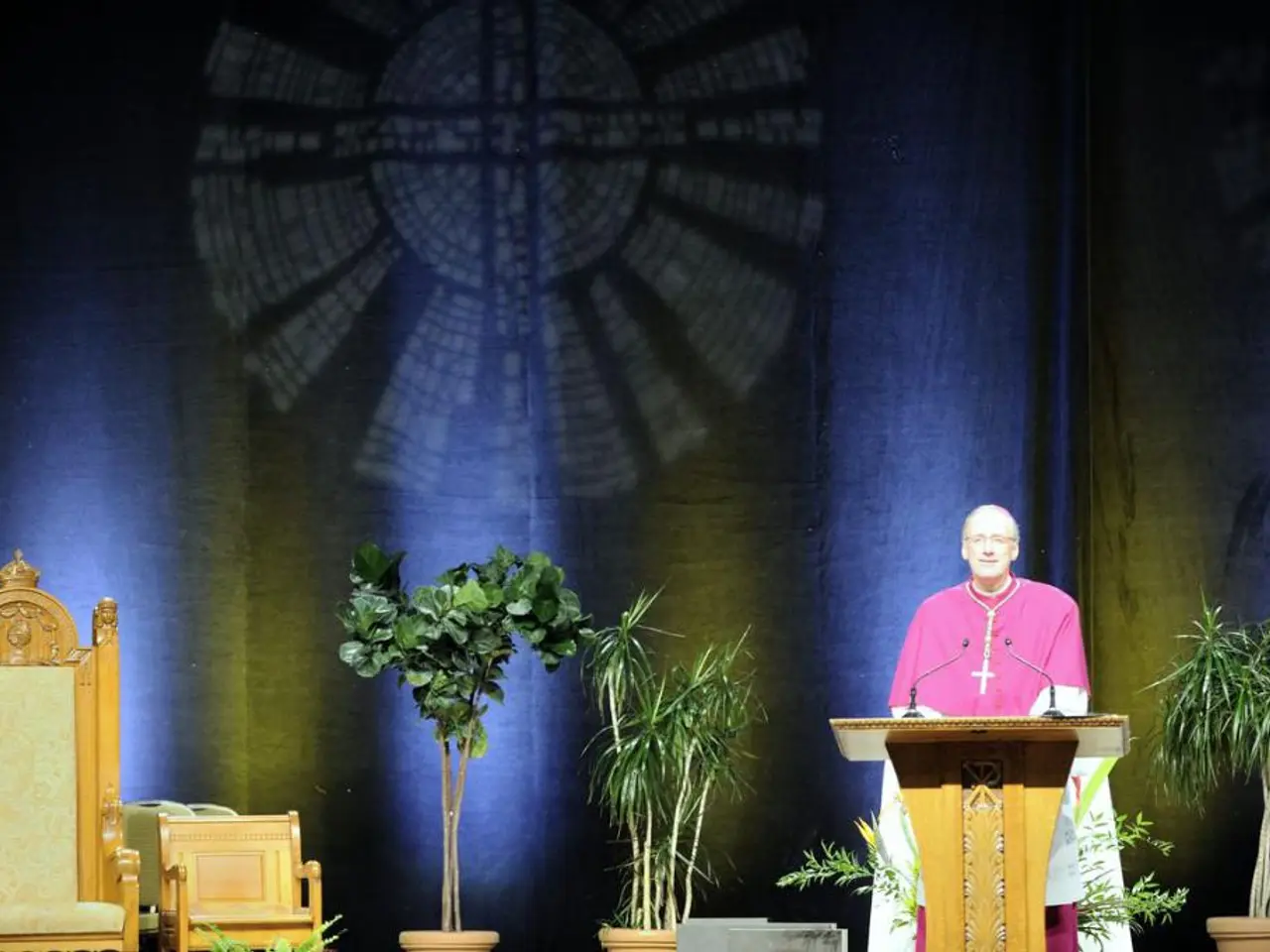John Roberts, the Chief Justice, intervened to stop the dismissal of the Director at the National Portrait Gallery.
Chief Justice John Roberts Stands Up for Smithsonian Director Amidst Political Pressure
In a significant stand against political interference, Chief Justice John G. Roberts Jr., as the chancellor of the Smithsonian Institution, played a pivotal role in preventing President Donald Trump from firing Kim Sajet, the director of the Smithsonian National Portrait Gallery.
The drama unfolded in May 2025 when President Trump announced Sajet's firing via social media, alleging her partisanship and support for diversity, equity, and inclusion (DEI) initiatives. However, Sajet continued to hold her position due to the Smithsonian's governance structure.
The Smithsonian issued a statement clarifying that all personnel decisions, including director firings, are made by and subject to the direction of the Smithsonian Secretary and overseen by the Board of Regents. As the chancellor—an influential leadership role closely tied to the Board—Roberts' involvement was crucial in upholding the institution’s authority over personnel matters and blocking the president’s attempt to remove Sajet unilaterally.
The Board of Regents has the authority to oversee personnel decisions, including director appointments and terminations. The statement from the Smithsonian underscored this by emphasizing the institutional mission and control over staff decisions being centralized within the Secretary and overseen by the Board. This governance framework directly prevented an external political figure, even the president, from forcing director firings without institutional process.
The standoff between Roberts and Trump came to a head when Republican Representative Carlos Gimenez, a member of the Smithsonian's board, demanded that the institution follow Trump's orders regarding Sajet's firing. However, Roberts reportedly responded with "We already have a motion on the floor," effectively putting a stop to internal suggestions that the Smithsonian follow Trump's orders.
The incident sparked a resolution from the Smithsonian, asserting its exclusive right to fire the director of one of its museums. The resolution promised to give directors reasonable time to ensure unbiased content and report back on progress and personnel changes.
The resolution and scrutiny over Sajet's leadership followed pressure from President Trump, who had accused the Smithsonian of coming under the influence of a divisive, race-centered ideology in an executive order earlier this year. Trump claimed to fire Sajet and called her a highly partisan person, a strong supporter of DEI.
Despite the controversy, Sajet continued to report to work until she formally quit her post last week. Meanwhile, last week also saw Amy Sherald pulling the National Portrait Gallery's planned iteration of her mid-career survey due to being asked to remove a portrait of a trans woman posing as the Statue of Liberty from the show.
The incident marks a significant moment in the history of the Smithsonian Institution, with Chief Justice Roberts Jr. standing firm in upholding the institution's independence and democratic values.
- The Smithsonian National Portrait Gallery's gallery featuring diverse artworks remained unaltered, as the institution's independence was upheld through Chief Justice John G. Roberts Jr.'s pivotal role in preventing the director's removal.
- The ongoing political rhetoric surrounding war-and-conflicts and policy-and-legislation, including President Trump's accusations, have exposed the delicate balance between politics and the Smithsonian's mission to educate the public about art and history.
- In an unexpected turn of events, the exhibition of controversial art pieces, such as Amy Sherald's portrait of a trans woman as the Statue of Liberty, became a reflection of the museum's perseverance in maintaining their commitment to diversity, equity, and inclusion.
- As the dust settled on the contentious situation, the Smithsonian Institution finds itself in a unique position—a politically charged environment that serves as an opportunity to address general news topics, such as war-and-conflicts and policy-and-legislation, through the lens of art and historical exhibitions.





